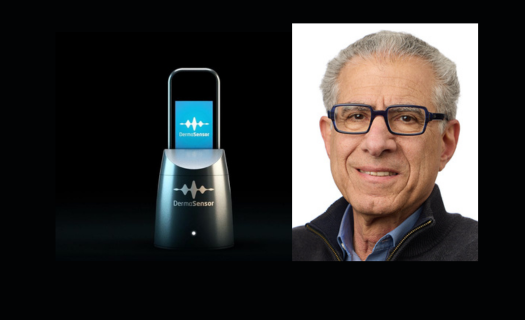Breakthroughs by Bigio, Grinstaff, Cheng, and others are aiding the fight against cancer.
At Boston University, the DermaSensor story—of a cancer-fighting breakthrough making its way from the lab to helping patients in the clinic—is a familiar one. In recent years, BU researchers have pioneered more effective tests for lung and prostate cancers, developed screening guidelines that catch more at-risk patients, and helped invent a chemotherapy drug that takes on advanced breast, lung, and pancreatic cancers.
And all are being used to help prevent and treat cancer right now.
DermaSensor was a breakthrough more than 20 years in the making. In 2001, physicist Irving Bigio came to Boston University and set to work on developing and refining a technique called elastic scattering spectroscopy. It uses beams of light to analyze the structure of tissues. Because different cellular and subcellular structures scatter light differently, the light that bounces back can tell you a lot about the structures—like whether they are malignant or benign.
“When I came to BU, I was able to start collaborating with medical people and research centers here, refining the technology, so it would become clinically more friendly, easy to use with patients,” says Bigio, a BU College of Engineering professor of biomedical engineering and of electrical and computer engineering. The founder of the BU Biomedical Optics Lab, he also holds a position at BU’s Chobanian & Avedisian School of Medicine.
After years of developing the technology, the University and Bigio began looking for partners to put it on the path to clinical use, licensing their patents to DermaSensor.
